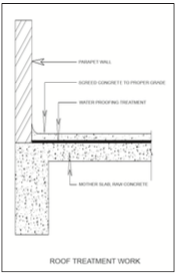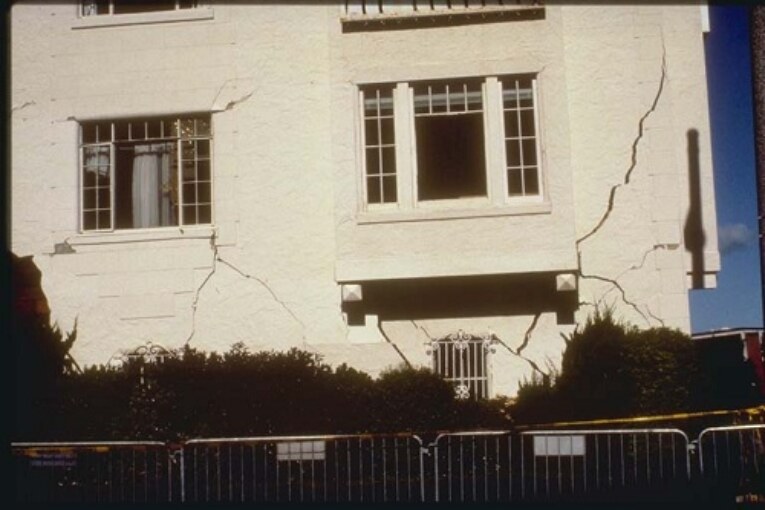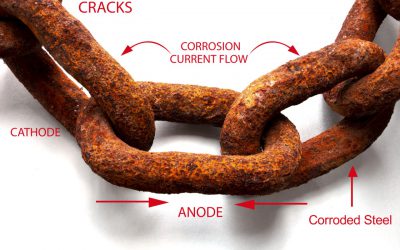Screed Concrete On R.C.C. Mother Slab

Screed concrete in slope on R.C.C. mother slab is a common method to drain out storm water from terrace. And we know there is a joint between old and new concrete. So, in every joint a bonding agent is required between old and new concrete. That too should have a property to adhere wet concrete to old concrete.
In practice we apply one or two coats of liquid copolymer on mother slab, this may be a mix of cement with copolymer or only acrylic copolymer coating on mother R.C.C. slab. The property of coating by nature is water impermeable.
Cement slurry in screed concrete is not absorbed by this treated surface. So, there is always a lack of bond between two layers. Upon drying up of the screed
concrete layer, moisture is evaporated. During evaporation, upward pressure of moisture causes initial de-bonding between mother R.C.C. slab and layer of screed concrete. As well as, this drying up causes shrinkage cracks in screed concrete layer, which are ultimately turns into major cracks due to thermal expansion and contraction and de bonding with mother R.C.C. slab. Storm water is entrapped in layer of screed concrete through the propagated cracks and retains on the mother slab. As a result, the polymer on mother slab is damaged due to swelling property of copolymer
in long time contact with water. Treated surface is damaged in course of time and crack appears, through which water takes place in mother slab after one or two seasons. Water leakage is a result of this practice.
In fact, this is a major issue in regular building roof. There is no doubt that de- bonding between two layers and shrinkage is major issue to develop cracks in screed concrete layer.

SYLOCON® is the right answer to overcome this challenge. SYLOCON® added concrete mix, which is laid in panels on mother slab with proper slope reduces heat of hydration of cement. Micro fibres, which are well dispersed in SYLOCON® produce
a complete net bonding as additional reinforcement.
Bonding between mother R.C.C. slab and screed concrete layer is so good that de bonding is totally avoided. SYLOCON® added mortar is waterproof by nature after hydration is complete. There are no chances of appearing cracks in concrete during evaporation of moisture, due to less heat of hydration.
SYLOCON® is the product to overcome the challenges of cracking, efflorescence, water seepage on plaster or putty finished AAC Blocks, Fly ash bricks, Red clay bricks, R.C.C. surface and Screed concrete on mother slab.
Why do AAC Blocks Crack?
AAC falls under aerated concrete, high on suction, very high on shrinkage movement.
- Should be dry to control shrinkage.
- Cracks appear mostly at brick joints. Cracks are usually in straight lines orsometimes stepped / diagonal.
AAC blocks are designed to be with low
density for economic design of building. Aeration reduces density, by-products being low strength, high water absorption and very high shrinkage. AAC blocks are produced using aerated cementitious composite, which is autoclaved. Immediately after production, AAC Blocks are usually in high moisture content.
Materials used in AAC blocks and autoclaving process affect shrinkage. For example, if graded and it turns out that the aggregates are not up to mark, it will have high shrinkage. AAC blocks should be dried sufficiently before putting them into use. Additionally, no water shall be supplied to AAC blocks during construction. Now, it is common sense that effective water curing affects high cracking in AAC. In that case block fixing agent is used whose strength is higher than AAC block, as a result
cracks appears at other places. Normal cement sand weak mortar with self-curing compound should be used for fixing blocks. Air increases porosity; when pores in the block receive water, they expand; and when dried, these pores shrink.
So, AAC expands and contracts. Although very marginal on change in length, brick binding mortar cracks due to tensile stress. While storing at factory / site, blocks are stacked in piles. Blocks in the outer periphery dry out well but the blocks deep inside the pile do not dry enough. Curing is the most important source of expansion. Rainwater is another source. Sun is important source of drying.


Wind as well, depending on Relative Humidity. Diagonal cracks / cracks through bricks are due to handling of the bricks by labour. AAC blocks are poor in compressive strength; do not resist shocks when dumped from a height. They develop minor fissures internally. Crack propagation is always through the weakest zone. Brick binding mortar will be stronger than the cracked block, so crack goes through the brick. Therefore, we see diagonal cracks Otherwise, cracks in AAC blocks are always in straight lines. Steps may be observed, depending on weaker zones for crack propagation.
Size Of Block
As the size increases, cracking reduces. 4’ wide blocks crack higher than 9’ wide blocks due to lesser self-weight.
Change in background is weak zone especially where mesh application is
not possible. We see straight line cracks between junctions of columns / beams and walls with no mesh. One or two concrete beds are provided in the walls usually in AAC blocks. If such beds are provided, mesh shall be applied before plastering considering change in background.
If the wall is exposed to wind movement / heavy sun, chances to cracking is high. As the height increases,
due to heavy wind cracks may develop.
Workmanship: For example, cutting the bricks for electrical conduits etc shall be done carefully, without subjecting the blocks to high loads.
Shocks: Due to lack of enough self- weight, the walls move heavily even with smallest shocks. If nails are used to fix meshes at background changes before plastering, the brick binding cracks. Packing / filling materials in holes of electrical fittings etc. These also are weak zones, through which cracks appear.
Rain: Always store the blocks in a shade away from rain. Ensure they are dried well before use.
Methodology
Factory Inspection is essential to observe storage conditions. Buy from reliable suppliers who store blocks away from rain. This should be sufficiently dried before supplying to site.
Mesh: Use glass fibre meshes in all junctions. Fibre mesh is flexible and can be easily applied at all junctions even if the column / beam does not flush with the wall. Also apply mesh at the concrete beds.
Use Self Curing Mortar by using SYLOCON ® in mortar for both brick binding, putty finishing and plastering.
Precast Lintels: Precast lintels to avoid curing after application – store AAC blocks on a dry platform and protected from
rain. Make smaller stockpiles with enough sun and air to pass through the blocks for drying. Ensure that bricks being used are dry. Moisten surface only to receive mortar.
Carefully select unbroken bricks for brick binding. Any bricks with cracks / defects shall be quarantined for disposal. Apply self-curing mortar thoroughly on the full face of the block (not just only at the
corners of each side). If the mortar is self- curing, thickness does not matter much. However, excess thickness affects the last layer of blocks ending at the concrete slab/ beam etc. The opening left for the topmost (last) layer could be so small that the mason will be forced to use broken bricks, which results in a weak zone.
Due to this, most AAC manufacturers recommend thickness of 3-5 mm for brick binding mortar. Therefore, ensure full blocks are used always.
Best practice is to cast precast lintels and be installed in place. Allow at least 3 weeks of drying of the brick binding before application of plaster. At this stage, some cracks may appear at the joints yielding to shrinkage movement of blocks. Check for cracks to see if any blocks have completely dislodged and can be removed by hand. Remove such loose blocks and scrape the dead mortar in the hole and the block.
Check if the block has no damage and can be reused. Apply fresh mortar thoroughly over the face and reinstall the
brick using waterproof coating compound. Repeat the process of crack inspection.
If due to any reason, half blocks must be used in the top layers, neatly cut the blocks to the required size before application
into the wall. Do not use broken bricks. Ensure water does not reach the blocks in the whole process. Due to uncontrollable reasons like rain etc, if the wall becomes damp, leave it for 2 months of drying. External plaster shall be done only after 2 months of cessation of rains.
Declare the wall is ready to receive plaster if there are no dislodging blocks. Pack all the gaps etc, in the electrical conduits with mortar prepared using SYLOCON ®. Use fibre Mesh of 8” width in all junctions. It is flexible and gets into all the junctions, even if the column / beam does not flush into the wall. Do not use nails to fix the mesh. Mortar may be applied on the mesh, which is self-curing. De bonding between plaster and putty is another important reason behind appearing cracks on finished
surface. This is very difficult to control all the above-mentioned parameters at site. Ultimate user is mason and workers. System should be mason friendly and complication free.
SYLOCON® has all the properties to get rid of this problem. Once plastering is done with SYLOCON®, AAC Blocks property is changed to non-absorbent. If SYLOCON® is added to the putty, even gypsum putty, the putty is non-absorbent and crack free in nature. No water ingression is found through the SYLOCON® added mortar
or putty surface. So, once AAC Block is wrapped to avoid moisture and adequate bonding with waterproof plaster or putty is achieved, cracks can’t develop. Due to its non-water absorbent and crack resistant property, water can’t dissolve salts in masonry due to impermeability of outer finished surface.





0 Comments